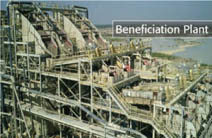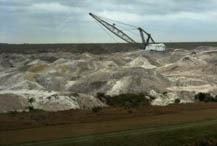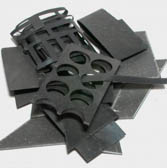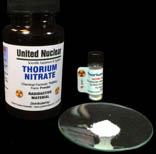Current Thorium Mining, Separation and Refinement
Currently, Thorium is almost exclusively a by-product of Rare Earth processing, and Rare Earth Processing in the West is almost exclusively a tailings by-product of other mining efforts – Titanium, Iron, and Phosphate mining being the main sources.

Mosaic Phosphate Beneficiation Plant

Florida Phosphate Mine
Only China processes Rare Earths as the primary mineral from a source of Ionic clay in the Baotou region of Mongolia. The Ionic Clays produce very little Thorium, but the Chinese have stockpiled this resource for use as a fuel for future nuclear energy development of reactors such as ABWR, CANDU and TMSR.

Example of Foil, Sheet and plate Thorium
note; the thorium is black from oxidation, it would be bright silver if new
Previously, Thorium products were relatively easy to acquire in many forms; powdered metal, foil, sheet, small billet, rod stock, square stock, ingots, etc. and in many products like Mag Thor, lantern mantles and thoriated tungsten, it has become very hard in the west to find pure thorium metal. A panic over radioactive materials of any level has left companies looking for replacements* to avoid the cost and liability of dealing with source materials, even if the issues are fully fabricated and virtually non-existent in actual practice.
[* the replacements never meet, let alone exceed the unique properties of original ‘Thoriated’ products]
Metallic Thorium powder, the main product of refining ThO2 or Th(NO3)4, is very difficult to handle because of its extreme flammability. Historic records indicate that electrowinning / electrolysis was used to plate out metal and make it less fraught to handle.

United Nuclear Scientific , Thorium Nitrate Powder


